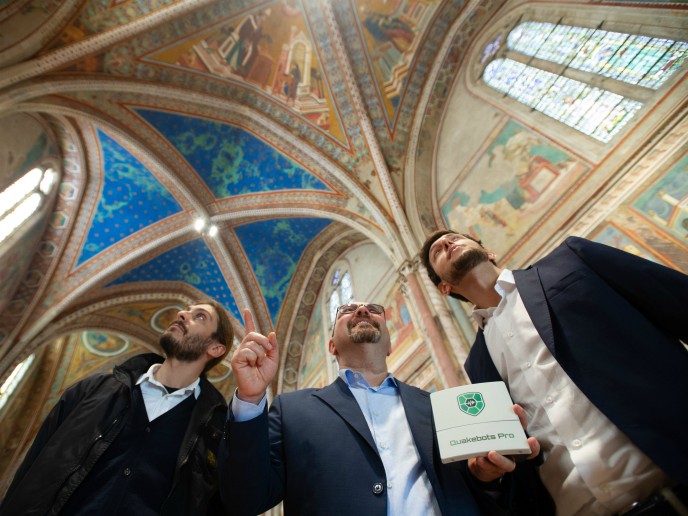Novel system monitors the impact of vibrations in buildings and infrastructures
Europe has millions of structures in seismic areas, and about 70 % are over 30 years old. Internal modifications, restructuring interventions and external mechanical stresses can contribute to jeopardising their stability over time. “We always think of earthquakes as destructive events, but they’re natural events,” says Gianni Alessandroni, coordinator of the EU-funded Quakebots project. “The real killers are the buildings, which in many cases are built without anti-seismic criteria or on unsuitable soil.” Using AI and IoT for disaster management Project partners developed a vibrational and seismic monitoring system that combines the latest technology in AI, IoT and cloud computing. The system is a network of intelligent sensors installed on buildings that monitor in real time even the slightest vibrations. If the device records anomalies or deviations in a structure’s behaviour, a notification is sent to users via smartphone, email or SMS. The sensors are connected to a specially built cloud platform that’s completely customisable. It adapts to the needs of each client concerning the complexity of the information to be displayed. Once connected, the device begins to collect and send data to the cloud platform. “We have worked to create a cloud platform that’s highly scalable and has the potential to handle millions of buildings with very low latency,” explains Alessandroni. Quakebots’ solution continually monitors a structure at little cost to individuals and large companies alike. It’s easy to install, fully automatic, and doesn’t require any particular attention or maintenance. New features are being added, and it’s possible to integrate services developed by third parties. Users can obtain an overall view of the monitored structure with just a few clicks. “Quakebots stands out from other vibrational and seismic monitoring systems for its quality, precision and ease of installation,” he adds. Alessandroni calls 2018 very productive and rewarding. It began when Quakebots’ unique proposition and value earned it a Horizon 2020 SME Instrument Phase 1 award, a major funding prize from the European Commission for further product development and commercialisation. 24/7 monitoring of buildings in Italy Project partners tested the device at the Italian National Agency for New Technologies, Energy and Sustainable Economic Development. The University of Perugia certified the system. Pilots in more than 70 Italian municipalities monitored city halls, schools, hospitals and public buildings. The system is already installed in the vaults of Giotto and Cimabue at the Basilica of Saint Francis of Assisi to ensure continuous monitoring of one of the most important historical buildings in Italy. Wise Robotics, project coordinator, also signed several partnership agreements to extend its commercial network and services. “One of the main achievements of 2018 was monitoring the EXXON Mobil industrial warehouses inside the refinery in Augusta, Sicily,” says Alessandroni. Public administrations, cultural heritage managers, condo and real estate owners, companies and factories have already adopted the system. Over 340 devices are at work throughout Italy, and the number is steadily growing.
Keywords
Quakebots, buildings, earthquake, vibrations, vibrational and seismic



